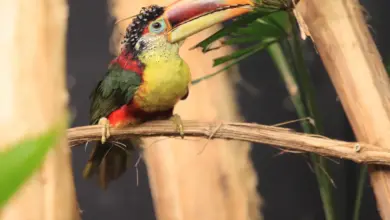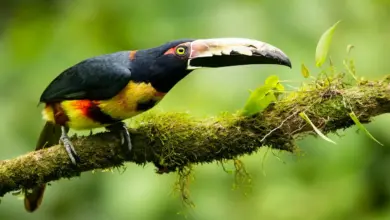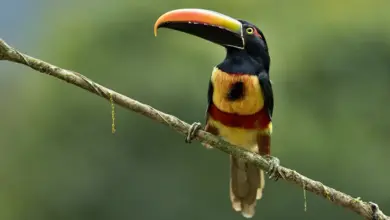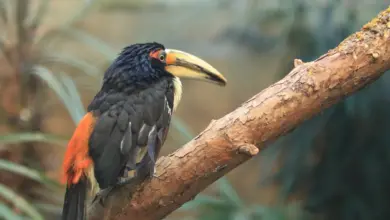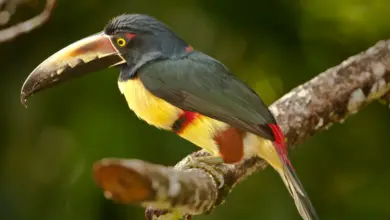Aracaris
-
Birds
Curl-crested Aracaris
The Curl-crested Aracaris (Pteroglossus beauharnaesii) is a South American toucan that is named after its distinctive curly head feathers. [ez-toc] Range and ecology The Curl-crested Aracari range includes central and…
Read More » -
Brown-mandibled Aracaris
The Brown-mandibled Aracaris (Pteroglossus mariae) is a South-American aracari that occurs naturally in the forests south of the Amazon river in eastern Peru and western Brazil as far as the river Madeira…
Read More » -
Birds
Lettered Aracaris
The Lettered Aracaris (Pteroglossus inscriptus) – also known as Lesser Aracari, Lettered Toucan or Maroon-banded Aracari – is found in South America, mostly south of the Amazon river. It lives in the subtropical…
Read More » -
Pet Birds
Fiery-billed Aracaris
The Fiery-billed Aracaris, Pteroglossus frantzii, are Central American toucans that occur naturally only on the Pacific slopes of southern Costa Rica and western Panama. [ez-toc] Small flocks, typically consisting of…
Read More » -
Birds
Black-necked Aracaris
The Black-necked Aracaris (Pteroglossus aracari) is a South American Toucan that occurs naturally in Brazil, French Guiana, Guyana, Suriname and Venezuela, where it is inhabits a variety of forest and woodland habitats. [ez-toc] Aracaris generally roost socially…
Read More » -
Ivory-billed Aracaris
The Ivory-billed Aracaris (Pteroglossus azara) is a South American Aracari that is found in the lowlands of southern Venezuela and northern Brazil at elevations of 300 meters and west into the lower elevations…
Read More » -
Birds
Stripe-billed Aracaris
The Stripe-billed Aracaris (Pteroglossus sanguineus) is a South American aracari that is found in the forests of Colombia and Ecuador. Aracaris generally roost socially throughout the year. Up to five adults and their fledged offspring…
Read More »
